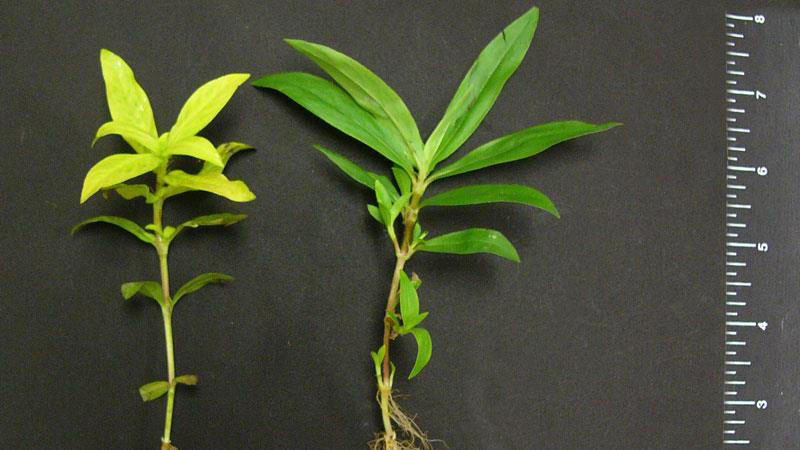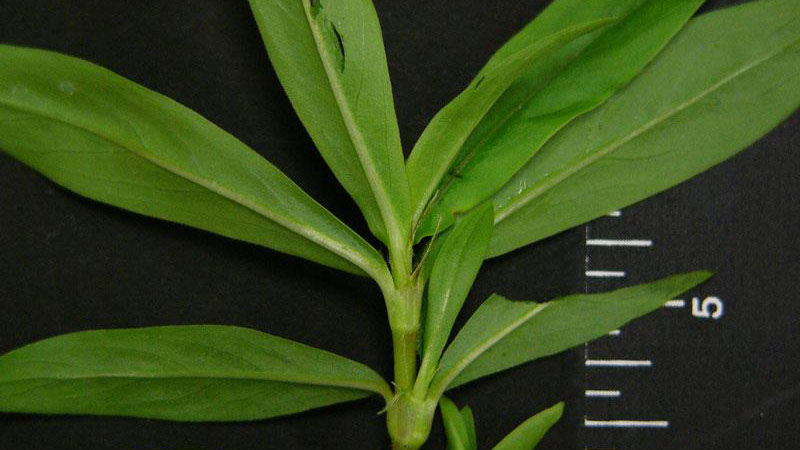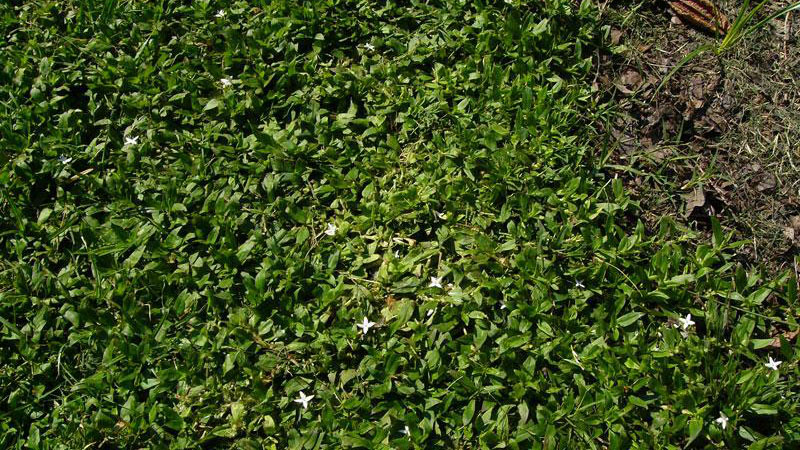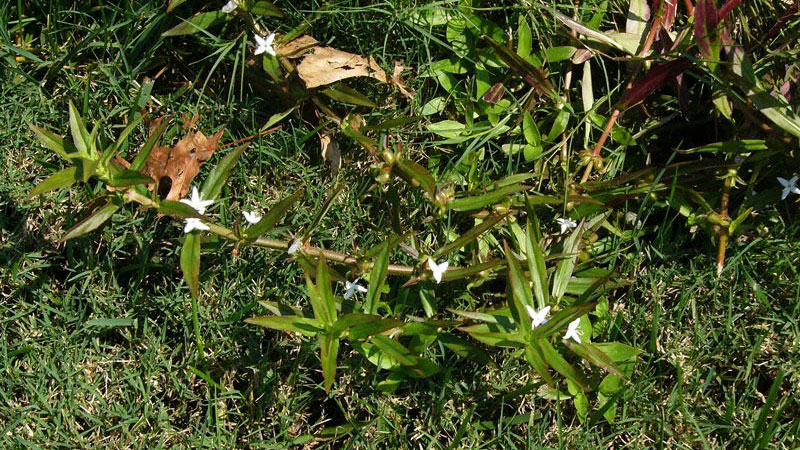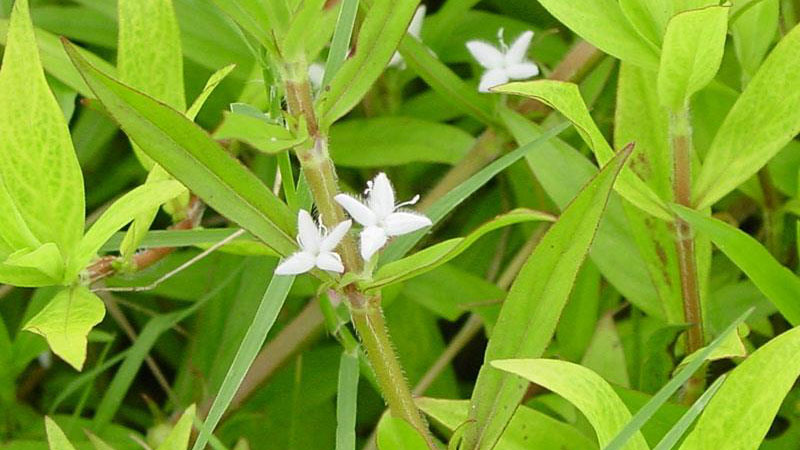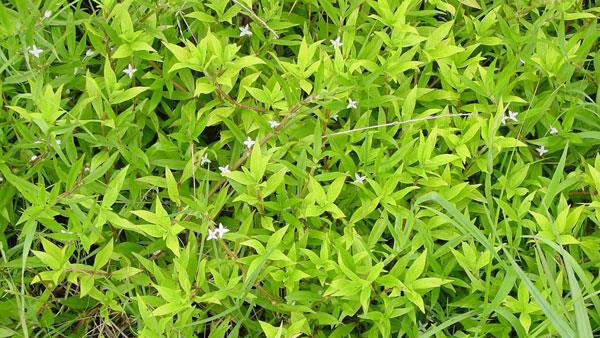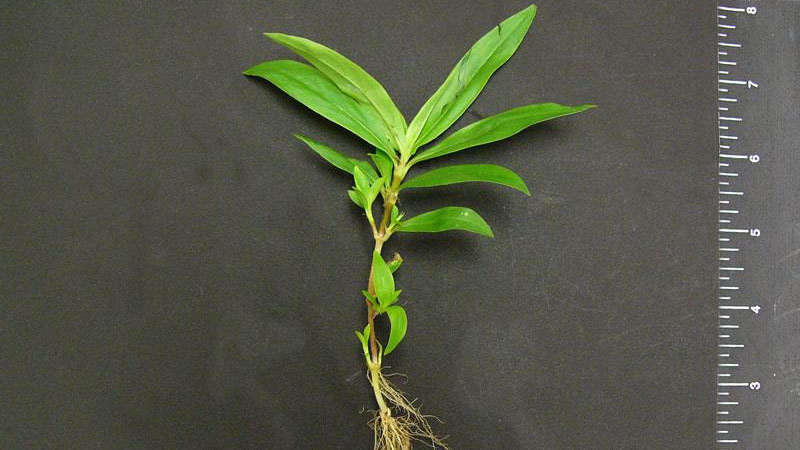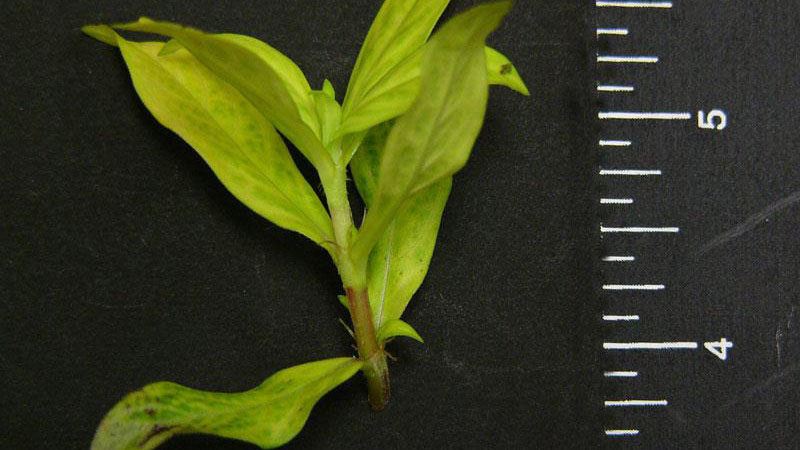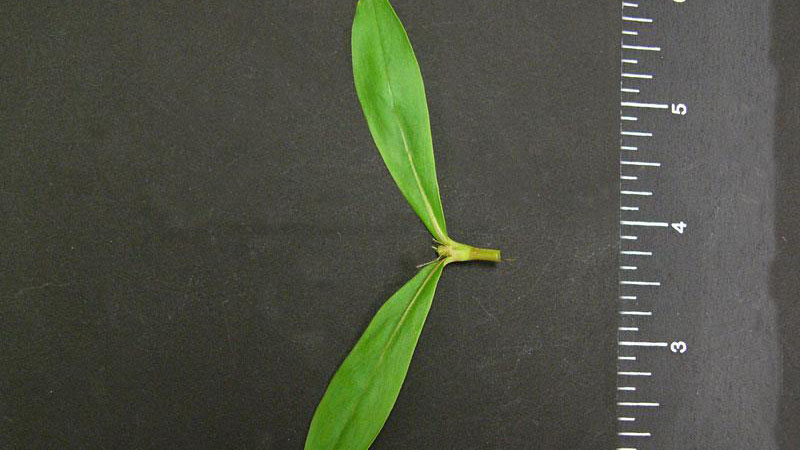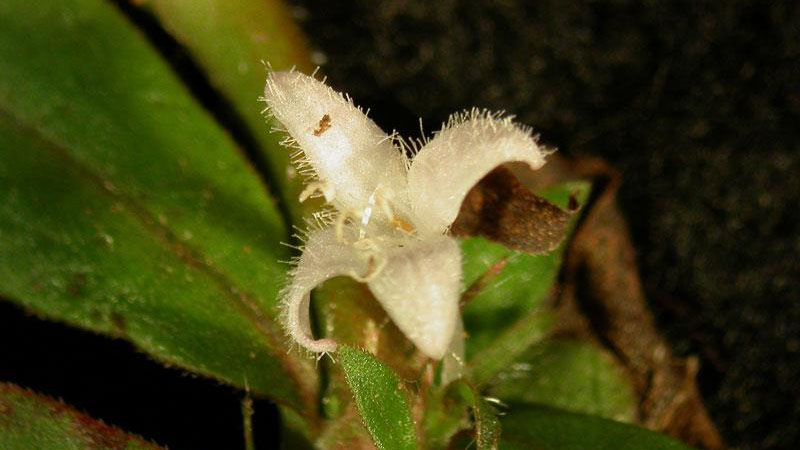Description
Virginia buttonweed (Diodia virginiana) is an herbaceous perennial with prostrate or spreading branches. The stems are longitudinally ridged, especially below the nodes, with hairs along the ridges. The leaves are opposite without petioles and rough along the margins. The leaves are slightly thickened, green on the upper surface and light green on the lower surface with both surfaces smooth and slightly folded. The leaves of Virginia buttonweed often take on a mottled-yellow mosaic look due to a virus. The white flowers sometimes have pink streaks in the center and are borne in the leaf axil. Petals are united into a tube.
Cultural Control
Perennial broadleaf turf weeds are capable of living more than two years. They thrive in weak, thin turf; golf fairways and roughs; home lawns; playfields; and industrial grounds. Proper turf maintenance is the key to control of this weed. First, select adapted turfgrass cultivars for your area and then properly fertilize, mow, and water to encourage dense growth.
Species Data
- GROWTH SEASON / LIFE CYCLE
- perennial weed
- GROWTH HABIT
- LEAFLET NUMBER
- LEAF MARGIN
- smooth
- LEAF HAIRS
- upper/lower surface
- LEAF / LEAFLET SHAPE
- oval / egg-shaped / elliptical
- LEAF WIDTH
- 1⁄2 - 1 inch
- LEAF VENATION
- pinnate
- LEAF ARRANGEMENT
- opposite
- ROOT TYPE
- fibrous
- FLOWER COLOR
- white
Figure 12
- white
Publication date: Nov. 20, 2017
N.C. Cooperative Extension prohibits discrimination and harassment regardless of age, color, disability, family and marital status, gender identity, national origin, political beliefs, race, religion, sex (including pregnancy), sexual orientation and veteran status.

